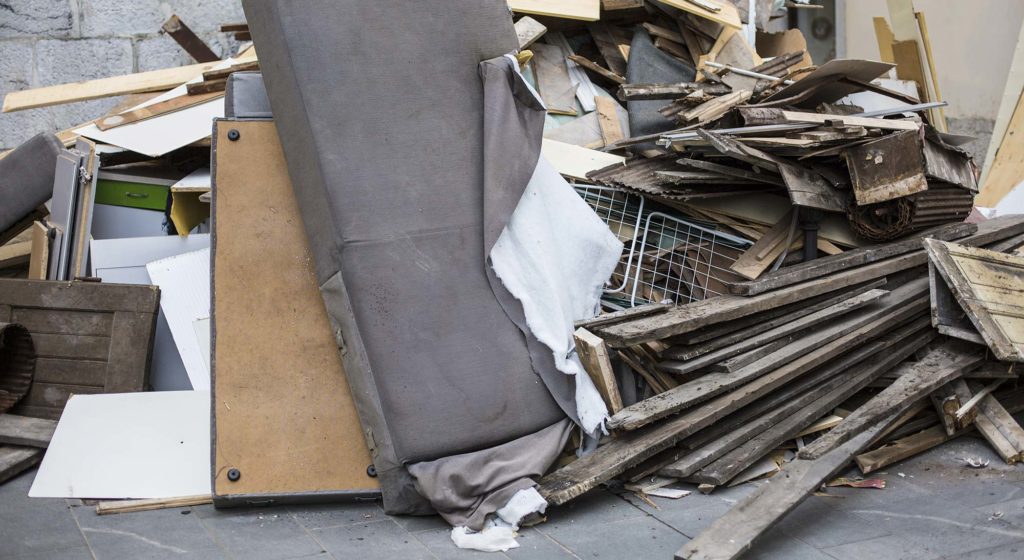Human activity is causing a serious waste problem not just on our land but also in the ocean. Our oceans are filled with a massive amount of rubbish due to the uncontrolled use of plastic-made products and other non-biodegradable waste.
A lot of rubbish is being dumped into the sea. A new study indicates that these waste products are entering our food chain and making their way to our dinner tables. Alarmingly, research shows that humans are consuming ocean waste at a rate equivalent to the weight of a credit card, or 5 grammes weekly.
Our oceans have been heavily exploited due to our excessive use of plastic daily. Because of our irresponsible behaviour, all levels of marine life are suffering greatly.
But what are these wastes, and how many are in our waterway? In the following sections, our Sydney rubbish removal team have put together the relationship between our ocean and wate and statistics that may just well open our eyes. To begin with, let’s learn how our rubbish ends up in the ocean.
How Does Rubbish End Up in the Ocean?
We have disrupted the ocean ecosystem and are slowly seeing the detrimental effects of our actions. And if you’re wondering how waste ends up in the ocean, you’re not alone. After scouring the internet, we discovered the most plausible theories.
The following are some ways in which rubbish ends up in the ocean:
- Plastic or other waste blows away while being transported to the designated facilities
- Waste washes into the ocean from beaches and rivers
- Waste droppings accumulate around drains and wash into rivers
- Sanitary products are flushed down the toilets along with wet wipes and other waste products
- We release microfibers and microbeads into the waterways when we wash our clothes
Types of Ocean Water Pollutants
The primary source of ocean rubbish originates on land. We expose the world’s waterways to a growing number of pollutants, including:
- Plastic debris e.g. plastic bags, straws, bottles, etc.
- Chemical runoff
- Crude oil
- Cigarette butts
- Discarded fishing nets and lines
- Metal scraps
- Medical waste
- Plastic packaging
- ..and others
Simply put, all of these activities are man-made, and we are the cause of waste ending up in the ocean. Most of us are aware of the negative consequences, but we frequently commit the most terrible mistake: we dump our rubbish irresponsibly.
Ocean Waste Statistics: How bad is our ocean’s rubbish?
The negative effects of human activity have caused a growing problem that seriously impacts marine life. Let us look at the shocking facts and what contributes to the massive amount of waste found in the ocean.
- 80% of ocean rubbish comes from land
- Rubbish build-up in the ocean gyre is growing annually
- Every year, 8 million tonnes of plastic enter the ocean
- Approximately one garbage truck’s worth of waste enters the ocean every minute
- More plastic fills the ocean than aquatic life
- Marine life is drastically threatened by plastic waste
- Humans generate 73% of beach litter worldwide
Looking closely, you can see that most ocean rubbish is made up of plastic. And despite being a major threat to our marine life and the entire planet, ocean waste has largely remained invisible. This is not just a problem in our country, but worldwide.
The oceans are suffering and dying. Plastic is strangling them, and toxic chemicals pollute their waters. For this reason, the Australian government mobilised the National Waste Policy Action Plan to mitigate land and ocean plastic waste problems.
What is National Waste Policy Action Plan?
Originally published in 2009, the National Waste Policy was updated in 2018. The primary goal of this action plan is to reduce the total plastic waste generated in Australia.
Among the targets are as follows:
- Exportation of waste plastic, paper, glass, and tyres will be prohibited beginning in the second half of 2020
- By 2030, Australia’s total waste generation should be reduced by 10% per person
- 80% average recovery rate from all waste streams by 2030
- Governments and industry should significantly increase recycling efforts
- Problematic and unnecessary plastics will be phased out by 2025
- Reduce the amount of organic waste disposed of in landfills by half by 2030
- Create comprehensive, economy-wide, and timely data available to the public to support better consumer, investment, and policy decisions
Bottomline
Our planet is considered to be endangered by the excessive use of plastic. Even if we don’t intend to litter, we can’t avoid throwing away plastic or any type of rubbish into the ocean.
Human activities have had numerous negative effects on the health of our ocean and aquatic life, including us—humans. These wastes pose a significant threat to our sea animals, but most people are unconcerned about the severity of the problem.
Numerous movements from various organisations have called for the end of single-use plastic. And there are plenty of reasons to stop using plastic, but the most important is the health and environmental consequences.
We know this will be a long and difficult battle. But how do we put a stop to this man-made crisis? Keep in your mind that small steps lead to big changes, and we can all make a difference.

